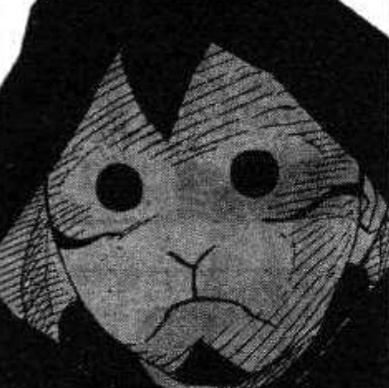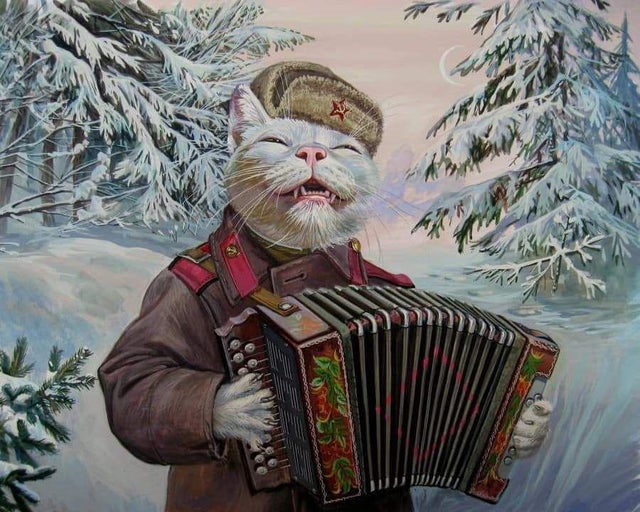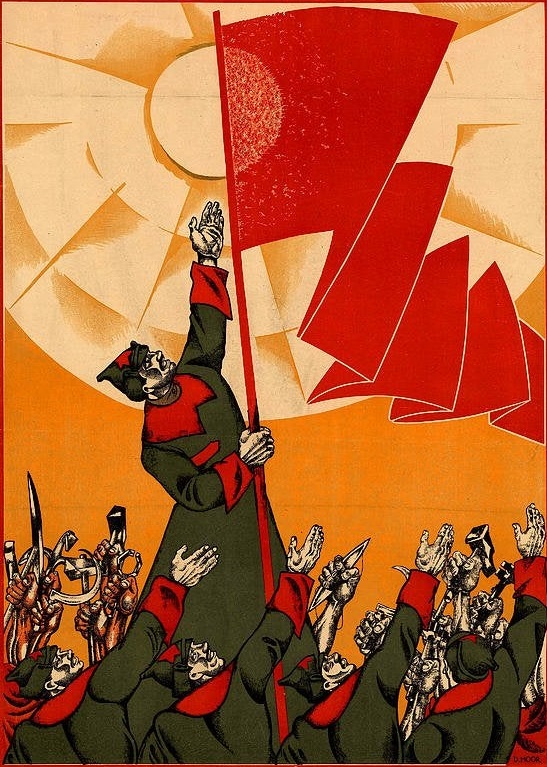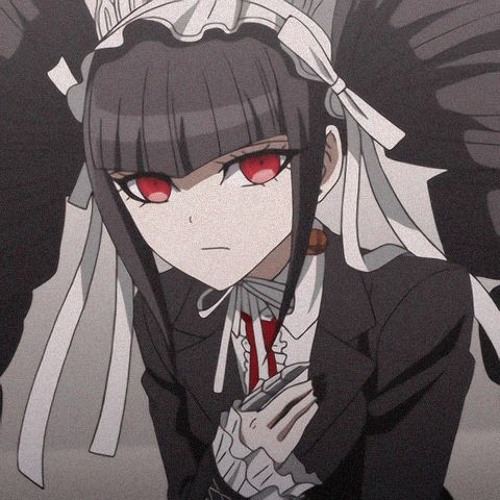- cross-posted to:
- [email protected]
- cross-posted to:
- [email protected]
spoiler
For six gruelling days earlier this month a small team of experienced Ukrainian soldiers managed to withstand Russia’s relentless assault on their position on the eastern front.
All aged under 40 and with two years of fighting experience, the six men held their ground despite a barrage of rockets and killed over 100 Russian soldiers, said their commander in Ukraine’s eastern Donetsk region.
“When they rotated out, they were trembling. They hadn’t slept or rested,” their commander said near the frontline south-east of Pokrovsk, a city Russia is seeking to occupy. “But those guys did their job and held the line.”
The troops who replaced them were less successful. Of the eight soldiers rotated in, only two had previous combat experience. All six new conscripts — most over the age of 40 — were killed or wounded within a week, forcing the unit to retreat.
Outmanned and outgunned since Russia’s full-scale invasion in 2022, Ukraine’s troops have valiantly defended their territory from Russian bombardments, ground assaults and dirty tactics such as employing chemical weapons, which the US has said amount to war crimes.
Kyiv’s forces inflicted huge losses on the Russian army this year and proved they were still capable of seizing the initiative when they invaded Russia’s southern Kursk region.
But despite these achievements, Ukraine’s troops and their commanders are growing concerned over manpower problems, particularly the quality of new recruits and the speed at which they are injured or killed in combat.
The Ukrainian infantry is most acutely affected: its troops are grappling with exhaustion and flagging morale, leading some to abandon their positions and allow Russia to capture more land, according to frontline commanders.
Along the front in Donetsk, four commanders, a deputy commander and nearly a dozen soldiers from four Ukrainian brigades told the Financial Times that the new conscripts lack basic combat skills, motivation and often abandon their positions when they come under fire.
The commanders estimated that 50 to 70 per cent of new infantry troops were killed or wounded within days of starting their first rotation.
“When the new guys get to the position, a lot of them run away at the first shell explosion,” said a deputy commander in Ukraine’s 72nd mechanised brigade fighting near the eastern city of Vuhledar, a key bulwark that the Russians are attempting to flank.
This situation poses a significant challenge for Ukraine as it fights on the new front in Kursk while at the same time trying to fend off Moscow’s forces in its east. Kyiv is also pressing western partners for more assistance to help it turn the tide of the war.
President Volodymyr Zelenskyy travelled to the US this week to try to get the Biden administration behind his “victory plan” and force Vladimir Putin to the negotiating table sooner rather than later. But to strike a deal with the Russian president that would not amount to capitulation by Kyiv, Zelenskyy needs greater western support, including unprecedented security guarantees, to help his struggling troops on the frontline.
“We are in desperate need of strong soldiers,” said a commander who goes by the nom de guerre “Lawyer” because he had worked as an attorney before the war.
Senior Ukrainian officials said a recent mobilisation drive had allowed Ukraine to draft about 30,000 soldiers a month since May, when a new conscription law came into force. That is on par with the number of troops Russia has been able to recruit by offering large bonuses and generous salaries.
But commanders on the ground and military analysts have warned that the newly drafted troops are not highly motivated, are psychologically and physically unprepared — and are being killed at an alarming rate as a result.
One commander, whose unit is defending positions around Kurakhove, where Russian forces have made gains in recent weeks, said that “some guys freeze [because] they are too afraid to shoot the enemy, and then they are the ones who leave in body bags or severely wounded”.
After difficult combat stints, many new conscripts go Awol, commanders said. Some return so shell-shocked and exhausted that they are checked into psychiatric wards.
Several bungled rotations in recent months have led to Russia making easier gains than expected towards Pokrovsk.
“We are most vulnerable during rotations,” said the deputy commander. “That’s when Russia is able to advance . . . The infantry is crucial to our defence.”
Seasoned soldiers “are being killed off too quickly”, said another commander on the eastern front, only to be replaced by mostly older men without experience and in worse physical shape.
Age is a key concern — the average person in Ukraine’s military is 45. Of about 30 infantry troops in a unit, said the deputy commander of the 72nd brigade, on average half were in their mid-40s, only five were under 30 and the rest were 50 or older.
“As infantry, you need to run, you need to be strong, you need to carry heavy equipment,” he added. “It’s hard to do that if you aren’t young.”
But the problems start long before the recruits reach the battlefield, the commanders and analysts said.
A former Ukrainian officer who operates the analytical group Frontelligence Insight blamed “long-standing systemic problems that were left unaddressed for years”. Largely composed of mobilised former civilians, the Ukrainian army is led by officers and generals who started their career in Soviet times and had “never been in combat”, he said.
Commanders lay part of the blame on military recruiters: “It would be wise to pay more attention to each person’s characteristics and background to see where the guys best fit instead of sending everyone to the infantry,” said Mykhailo Temper, a battery commander in the 21st battalion of Ukraine’s Separate Presidential Brigade.
“You literally see all layers of society represented [in the infantry],” he added. “Not everyone is fit for the front.”
Temper, who is also the founder of a freeze-dried food company popular among outdoor adventurers and soldiers, said entrepreneurs like himself were often best equipped to serve in commander and officer roles, while some of his best trench fighters were former miners and factory workers.
Convicts released to serve in the army are also appreciated for their dedication and ability to adapt to the conflict zone, according to several commanders.
But every commander emphasised what they felt was inadequate military training for the new wave of draftees.
Temper said “trainers themselves don’t have real battle experience so they aren’t teaching what the newbies need to know to fight and, more importantly, to stay alive”.
Instead, conscripts were still receiving “Soviet-style” training, where “the army just passes everyone with good marks and sends them to the front”, said the deputy commander. New troops rarely practised with live rounds because of ammunition shortages, he added.
“Some of them don’t even know how to hold their rifles. They peel more potatoes than they shoot bullets,” he said, adding that he had bought paintball equipment to replace rifles and live rounds so that new recruits could get more practice without wasting precious ammunition.
Ukraine’s commander-in-chief Oleksandr Syrsky said this month that he had ordered improvements to the quality of training for new recruits by selecting “motivated instructors with combat experience” and raised the possibility of setting up an instructor school.
But the commander of an artillery unit said the deaths of tens of thousands of experienced soldiers over the course of the war were taking a toll: “If there are not enough people to fight, there are not enough people to teach.”
The commanders all said they tried to rotate troops every three to six days, depending on the intensity and dynamics of the fighting. But sometimes those stints can last for two weeks, especially when Russian drones spot the rotation and attack soldiers when they are at their most vulnerable.
Because Ukraine has no law on demobilisation, the soldiers are rarely allowed to leave the war zone to rest or visit family.
“Skif”, commander of a drone reconnaissance unit, first signed a contract when Russia annexed Crimea in 2014. He said that signing up for the army or being conscripted “is a one-way ticket” to the war.
The deputy commander echoed this, saying that he and his troops have not been reconstituted since the full-scale invasion.
“No rehabilitation time, no relief,” he said. “I see our guys when they leave the frontline . . . they are suffering burnout.”
Age is a key concern — the average person in Ukraine’s military is 45. Of about 30 infantry troops in a unit, said the deputy commander of the 72nd brigade, on average half were in their mid-40s, only five were under 30 and the rest were 50 or older.
“Some of them don’t even know how to hold their rifles. They peel more potatoes than they shoot bullets,” he said, adding that he had bought paintball equipment to replace rifles and live rounds so that new recruits could get more practice without wasting precious ammunition.
Let’s throw them another billionty million dollars. Maybe their Operation Barbarossa veterans will be able to finish the job and be in Moscow by winter.
Depressing as fuck. Some of these guys are just regular ass people
Jesus fuck, and all of this because some line on the map might get moved. Totally worth it.
Oh, it is about the line, but not on the map, it’s the same line that must ever go up, and for that it killed 1000 Americans per day, and the same that killed millions Iraqis, Koreans, Vietnamese, Palestinians etc. etc.
Why in the fuck are they referring to it as “the eastern front?” Is this all of a sudden a two front war, or is it just a weird throwback to 1941?
The goal of WW1&2 was never accomplished. Russia and it’s resources are still not under western control.
Well besides Kursk the fighting on the south is considered a different front too.
Well, for Kiev there’s the front to the east in Donbas and to the north in Kursk and other areas. Western news get their information purely from Kiev, thus they adopt the terminology.
entrepreneurs like himself were often best equipped to serve in commander and officer roles, while some of his best trench fighters were former miners and factory workers
The bourgeois are not human.
I swear I had to re-read this section a couple times because I thought I was imagining it. Fucking surreal.
I blame all the movies that came out where the white collar dude goes to prison and becomes leader of the Aryan brotherhood or some shit.
Is it 1917 again?
This is the funniest thing I’ve read this month, glad I skimmed this article.
“The poors that we already stuck in the mines now yearn for the front line.”
me: if I can freeze dry a strawberry and sell it to people who can’t afford a freeze dryer, i can run a military
me:
 :elmofire:
:elmofire:









